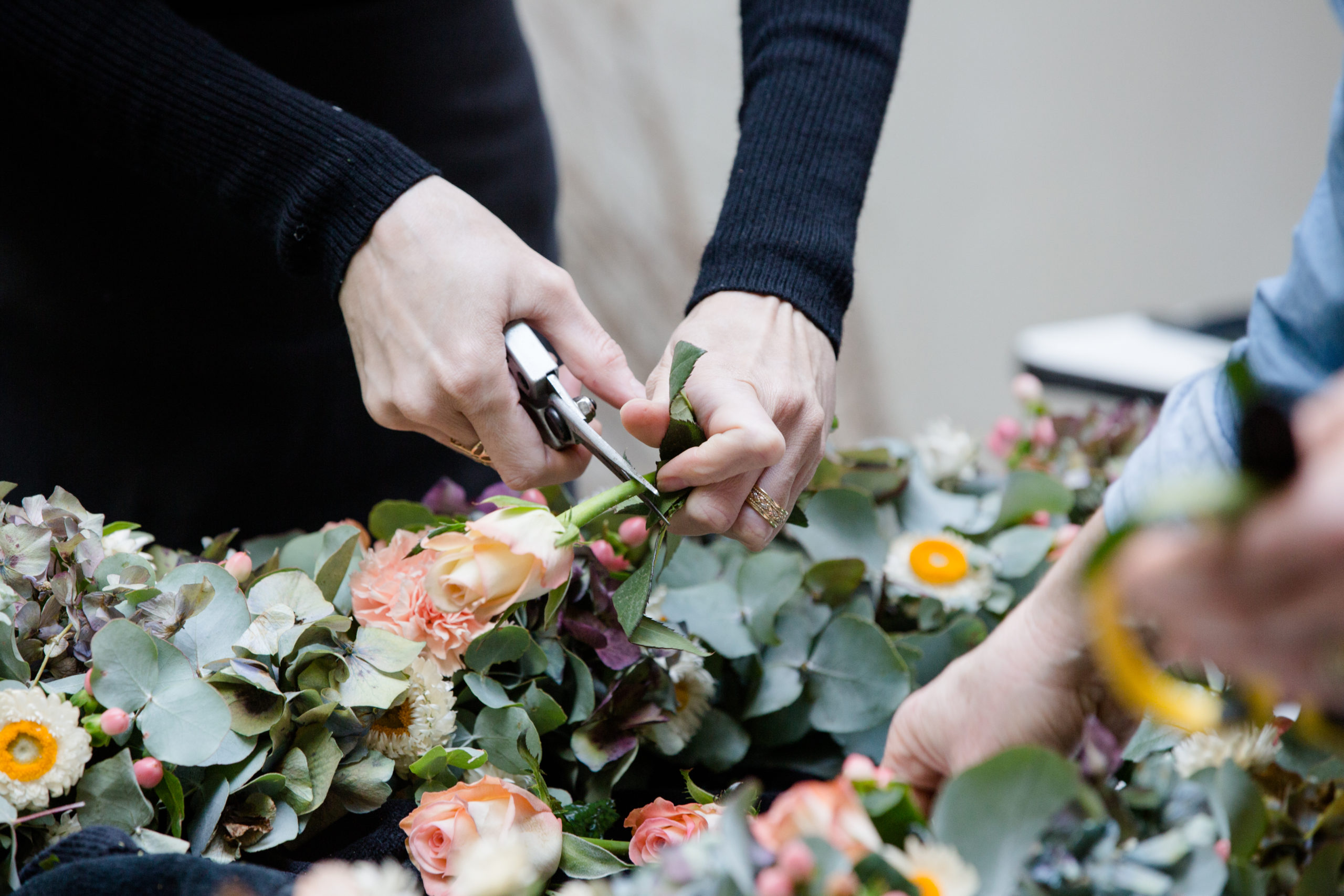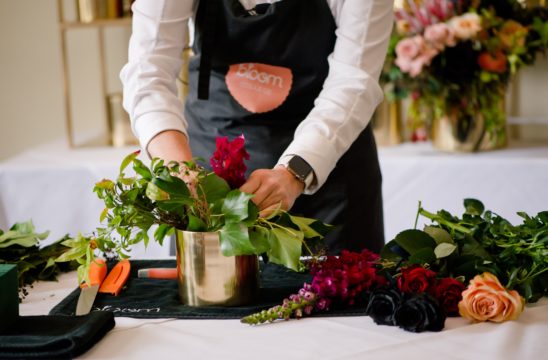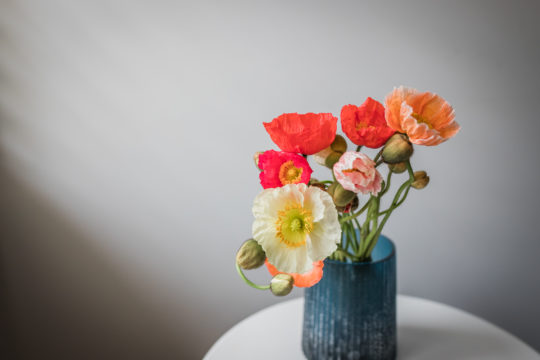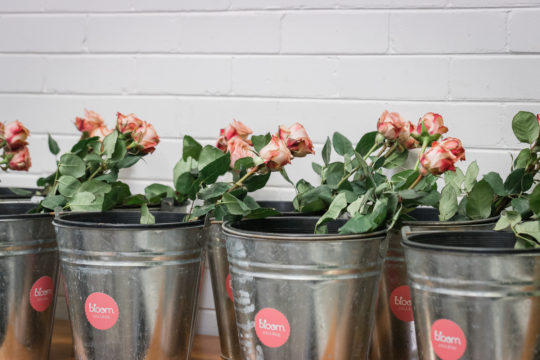Blog
tools of the trade: a florist’s essentials

When it comes to creating showstopping arrangements, your tools and accessories will be your secret weapons. A well-set-out workspace can make all the difference between a beautifully designed, thought-out arrangement, and a haphazard, messy one. Let’s get into exactly what every florist needs in their workspace for success.

A floristry workbench
To get started, we need to make sure we’ve got a designated place to work. We recommend finding a workbench that’s approximately 90cm in height. Kitchen and laundry benches are usually a good place to start looking, as these benches will usually come with a large in-built sink area which is perfect for filling up your vases and buckets. They’re also quite spacious and given that we recommend having about one metre of space to arrange on, this is a big tick.
Another advantage to kitchen/laundry benches is that they’re purpose-made to deal with spills and water. Whatever type of bench you choose, make sure that the table part is equipped to deal with water and can be easily cleaned. This is why we don’t recommend arranging flowers on your dining table––it’s likely to get nicks and water damage!
Don’t be afraid to look around for custom options either––at the Bloom Studio we used beautiful, wooden Ikea table tops and had the legs custom fitted to make them the correct height. We also had wheels added for movability. Add a thick coat of gloss on top to protect the wood from scratches and water damage, and you’ve got a sturdy, custom floristry bench.

A florist’s toolkit
First and foremost, make sure you’ve got your trusty, highly absorbent hand towel close by for mopping up any spills as well as keeping your hands dry.
You’ll also need:
- Pair of protective gloves – important for making sure you don’t get nicked and for removing any leaves on flower stems
- Flower cutting snips – ideal for cutting softer flower material
- Secateurs – for cutting hard-stemmed foliage and sticks
- Apron – for protecting your clothes from any splashes or dirt, as well as providing a handy pocket to keep your tools in
- Parafilm floral tape – for wiring and taping
- Snips sharpener – to keep your snips nice and sharp
- Wire – we recommend having a variety of sizes
Sharp snips are an indispensable tool for floristry, keep a few pairs for home, the studio and maybe in your car for any foraging finds. Just be mindful of putting your snips in safe areas, not on the edges of benches where they might fall off. Never place them into your pockets either, we recommend a good quality leather tool belt.

Preservatives
The aim of preservatives is to prevent the growth of bacteria. You may add a flower preservative to the container holding your flowers, just keep in mind that a little goes a long way, as they’re heavily concentrated products. Look into the different flower preservatives and what they are commonly used for. There are also preservatives specifically designed for certain flowers, or even natural alternatives to preservatives such as combining citric acid or white vinegar with sugar.
Unfortunately, preservatives can speed up maturation, so if you’re keeping your vases/vessels clean and changing the water every day, you don’t need to use preservatives.

Proper Waste Disposal
It’s important that floral material is disposed of properly. All green waste material can be put into a central green waste bin. There are companies out there that compost green material and some local councils also have green waste bins that they collect.
Contamination of green bins is something that you will need to be careful of, especially as some companies will charge if they find foreign material in the bin. Contamination can be something as little as a few bits of plastic wrap or some rubber bands.
With wired work, it’s easy for small bits of wire and parafilm to make their way into the bin, so to be on the safe side, it’s best to work into a general waste bin. Also, any material that has been in floral foam needs to go into the general waste. This is because flowers pick up the foam, which is a microplastic, contaminating the green waste.
When sweeping and using a dust pan to clean up, all that waste should go into the general bin as non-natural materials may be picked up and will contaminate the green waste.
Feeling a little more ready to take on the floristry industry? Before you dive into business, make sure to check out our online course, Bloom in Business. It’s a self-paced course that will teach you everything you need to know about starting out in the industry, and setting yourself up for success! Sign up for your free 30 min intro session here.